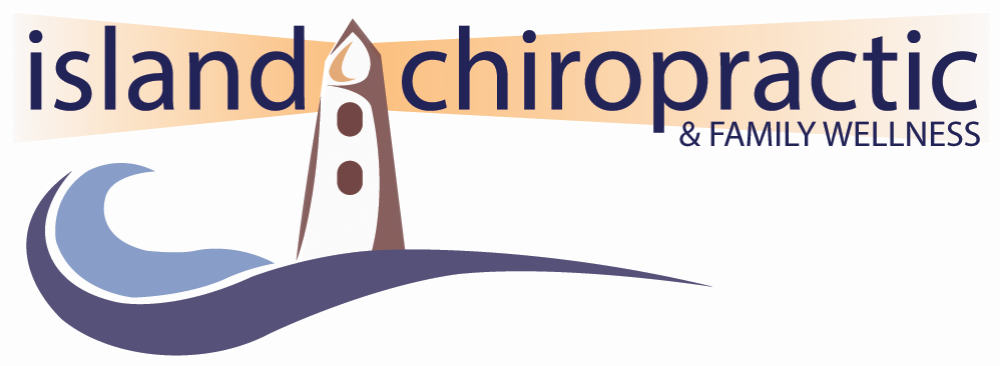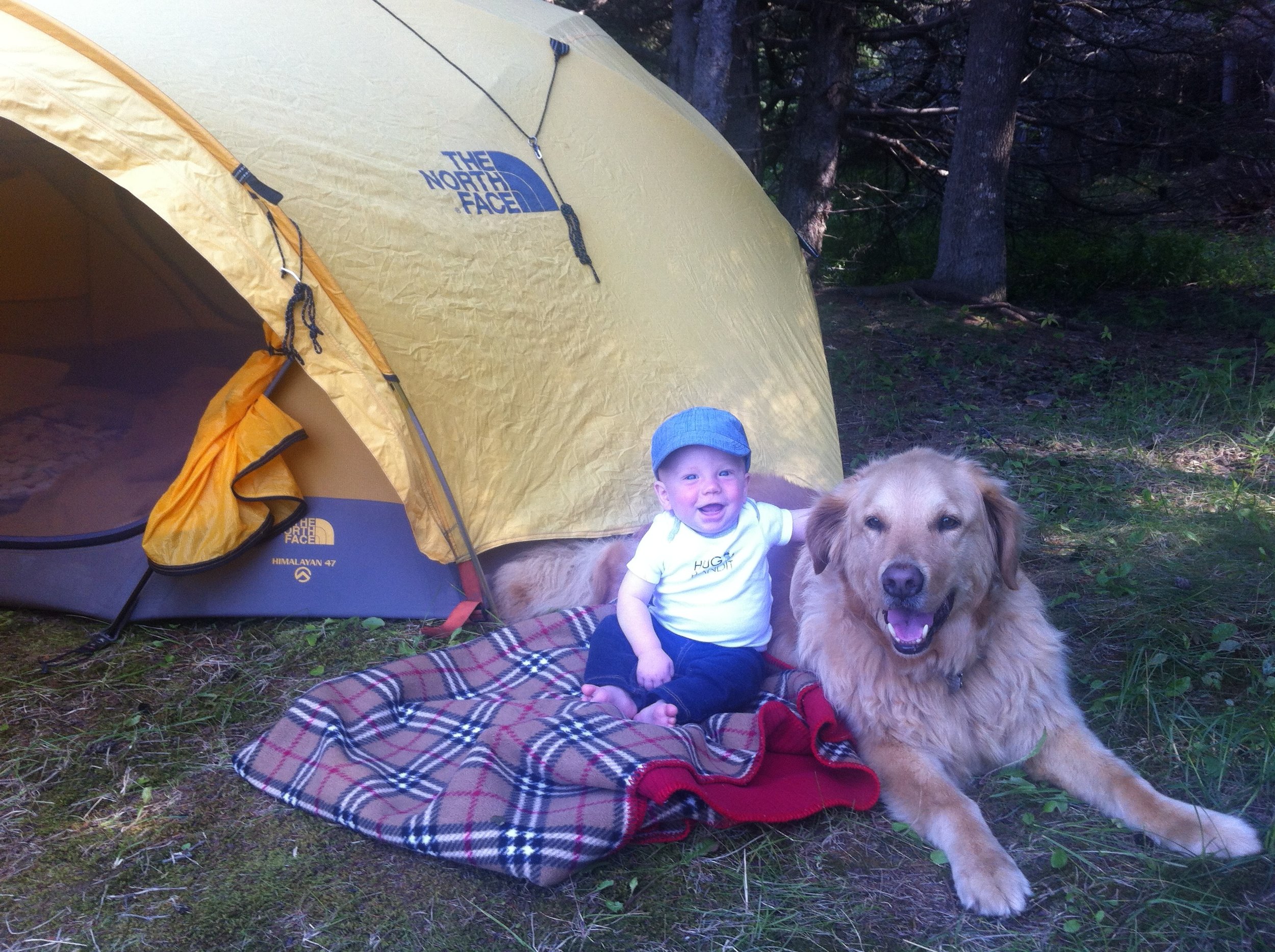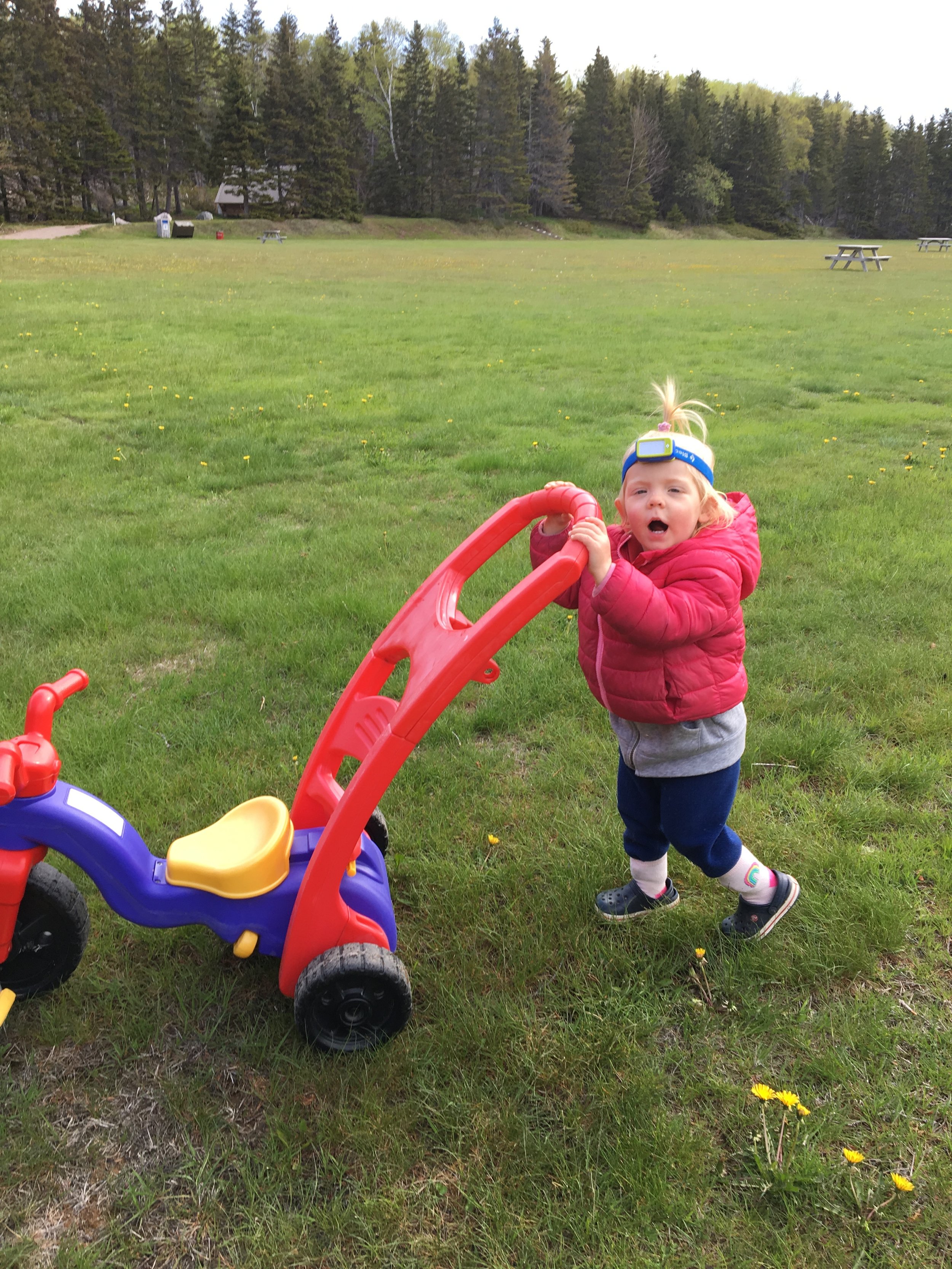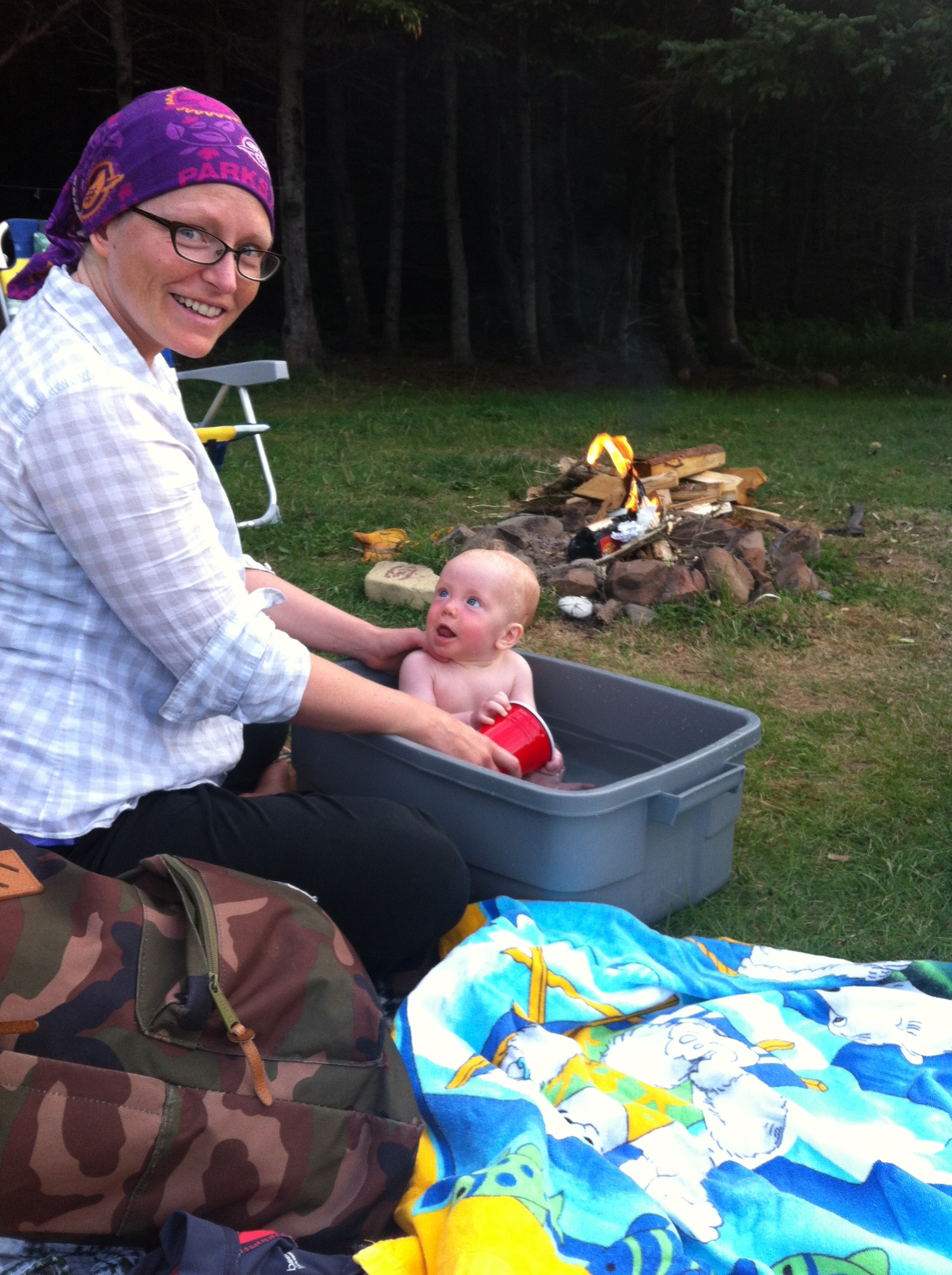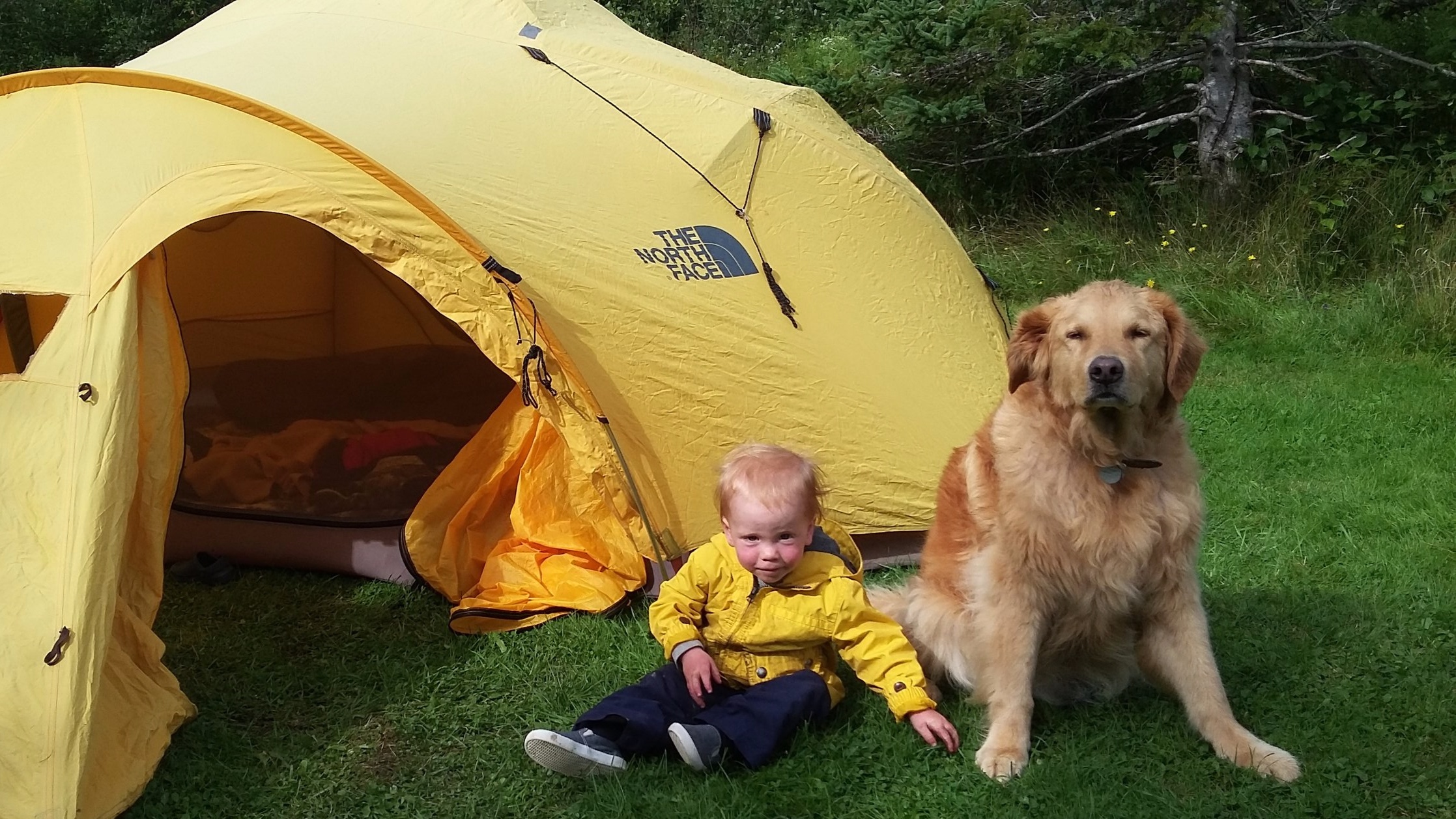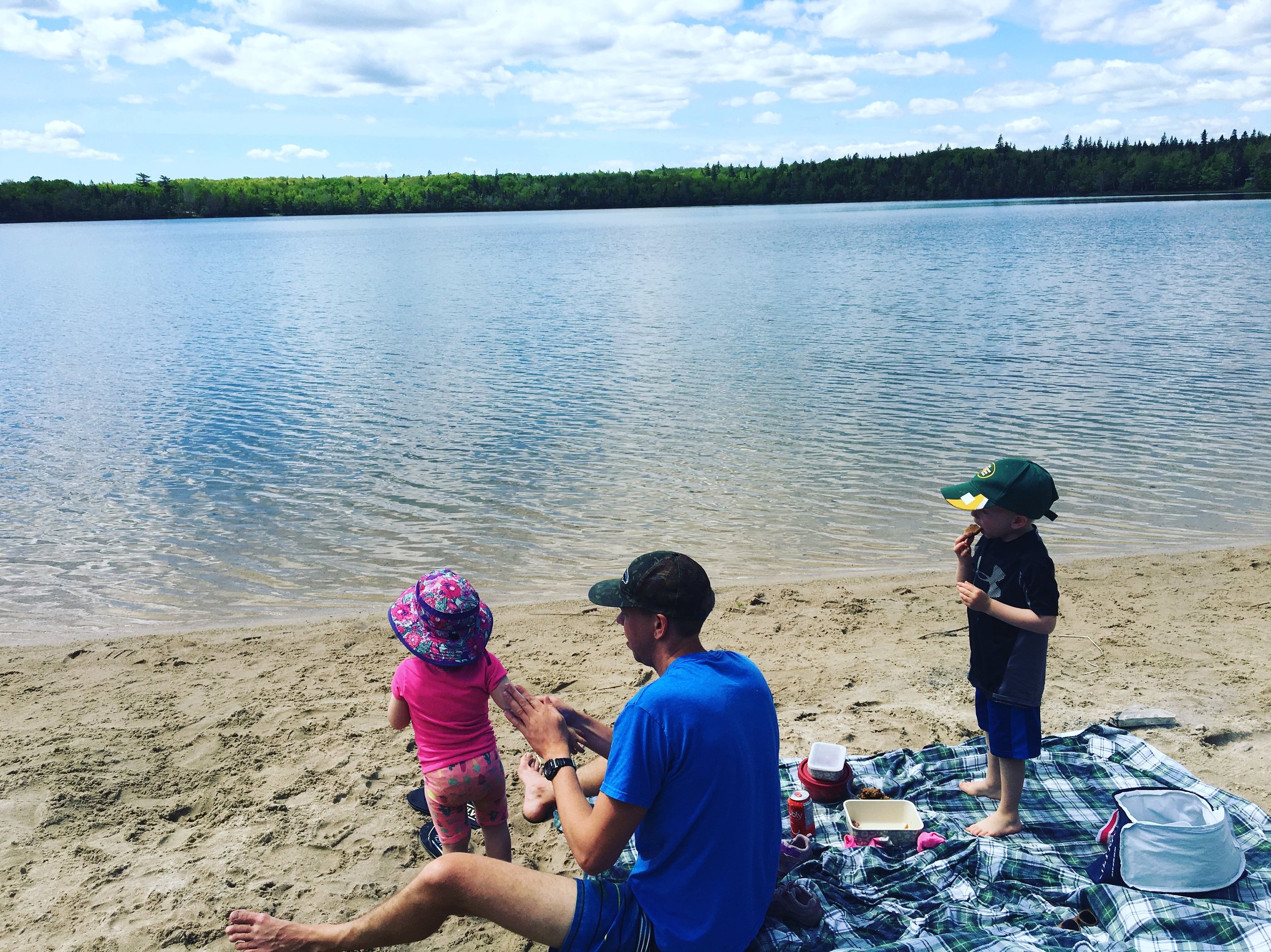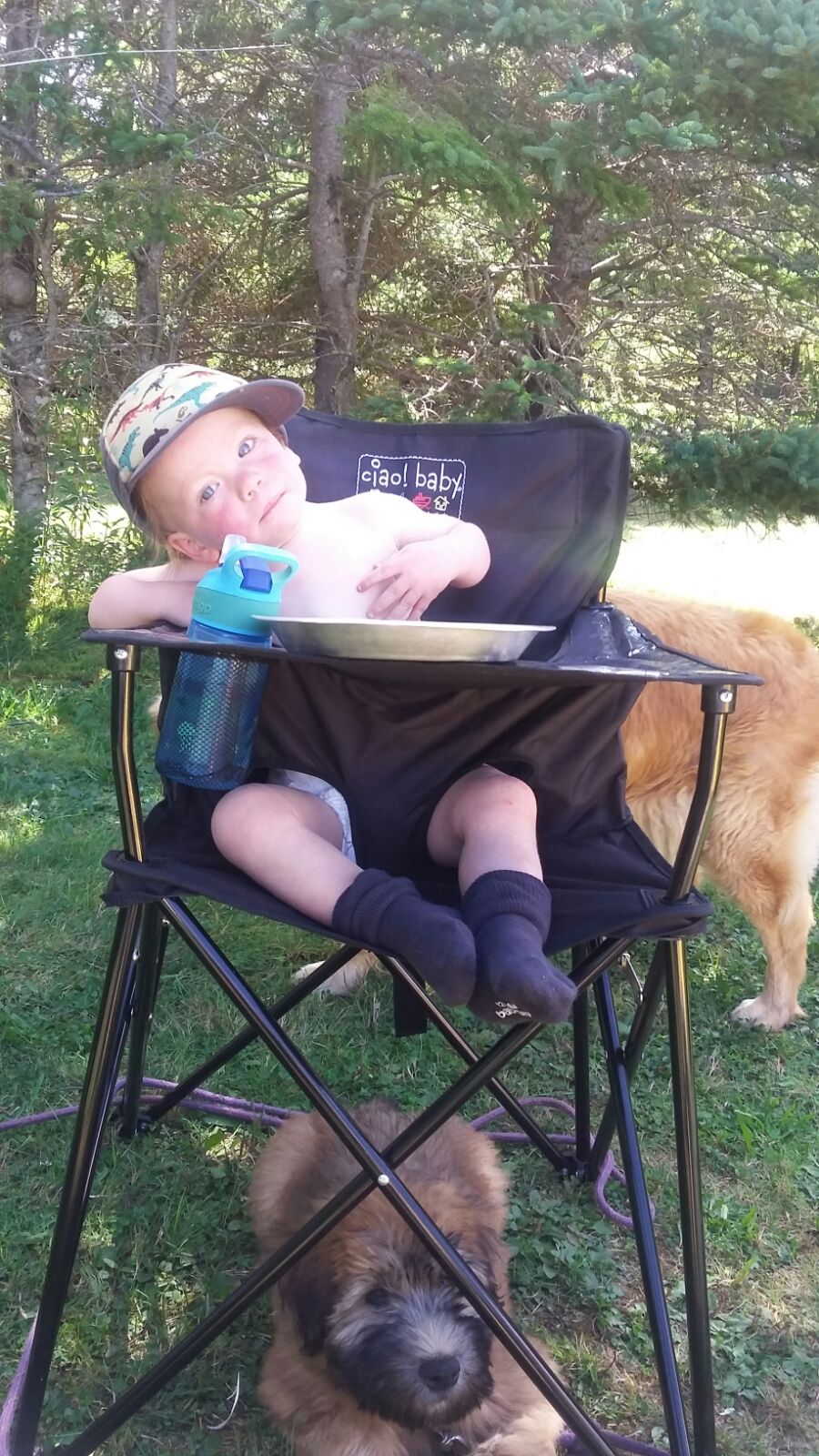Good posture can increase energy, improve breathing, circulation, and digestion. Good posture means less strain and pain on your connective tissue and joints. It can reduce…
Tick season
Practice safe gardening
Stay / Get healthy during quarantine
It’s easy to become overwhelmed with a wide variety of feelings during this period of uncertainty and isolation. Here are some some things we are doing around our house to stay healthy. This may be the perfect time to make your health a priority, and if you don’t know where to start, these tips could be exactly what you’ve been looking for.
Easter Sock Bunnies
Hot baths to live longer?
A Heart Journal study published in 2020 by the British Cardiovascular Society examined the relationship between tub bathing and cardiovascular disease. This study followed over 30,000 people for nearly 20 years and asked if frequent hot bathing influenced cardiovascular health.
The study determined that those who frequently bathed had a lower association with hypertension. This suggested a beneficial effect of tub bathing is a lowered risk of cardiovascular disease based on the relationship to high blood pressure.
Heat soaking increases core body temperature and cardiac contractility, similar to what happens to your body during exercise. Exposure to heat increases cellular production of something called heat shock proteins and in particular heat shock protein 90 (Hsp90). Hsp90 plays many cellular roles within the body, the cardiovascular relationship is involved with endothelial nitric oxide synthase and guanylate cyclase where it assists with vasorelaxation of smooth muscle.
While it is exciting to suggest that taking hot baths may offer protection against heart disease (after all who doesn’t enjoy a nice relaxing hot bath?), perhaps the association was due to the fact that those who took daily baths also had other heart healthy habits. The study found that those who took frequent baths were more likely to be non-smokers, employed, had better sleep hygiene, less likelihood of diabetes (thus likely healthier diets), exercise frequently, worked in an office (steady reliable income) and ate a larger proportion of fish, fruit and vegetable. So it seems that daily hot baths are just part of the program that keeps your heart healthy.
It is important to note that hot bathing can increase the risk of heatstroke, or exacerbate various medical conditions. If you have underlying medical conditions or are pregnant, Please consult with your chiropractor or physician before starting a regime of heat bathing. None of the information provided on this website should be substituted for medical evaluation, diagnosis, or treatment from a licensed healthcare practitioner. This information is simply for interest and readers are invited to follow the citation links to learn more.
Citation
Heart Published Online First: 24 March 2020. doi: 10.1136/heartjnl-2019-315752
Perspective
It is easy to get mentally caught up with the current state of affairs, now more than ever. Taking good care of your mental health during this crisis is just as important as the well being of your physical body. Here are some thoughts:
We have always been “walkers”, but it is so nice to see families out on the street going for walks (keeping social distance of course). Usually we are the only ones on the street during our walk, yesterday we saw 4 other families out for a early evening stroll. This is the perfect opportunity for families to create new health habits and spend time moving outdoors with their loved ones.
Taking time at home has given us the opportunity to do more home cooking and even the chance to teach our children cooking skills. Perhaps more people will get back to cooking roots and start learning how to make things from scratch, the old fashioned way. Shaun has started a sourdough “mother” and we are curious about this cooking experiment - this is something we would not be doing if things were “normal”.
Social media is a blessing and a curse. I never feel good after scrolling on social media at the best of times. Now, it’s even worse. I’m going to make a stronger effort to avoid chasing stories down the social media rabbit hole. Does it enrich my life or does it leave me feeling more stressed and worried about the current situation?
On that note, we’ve turned off the radio, as constant COVID news can break down nerves. We listen to music on CBC radio 2 or spotify. Even better, we are listening to learning podcasts. Listening to history podcasts that talk about other times in history distracts the brain and reminds us that history is literally happening now and life will continue.
When I was feeling especially blue after listening to the radio and reading online stories, I decided to switch my content and looked at happy pictures and videos of my children. Trying to see the world through their eyes makes dealing with today much more simple.
Staying curious and engaging with the world around you is a great way to stay distracted. Pick a question you’ve always wondered about and take some time to look it up. We have a guitar at home and I feel like it’s the perfect time for some online lessons!
Physical activity calms the mind. Even if you do not have a yoga trapeze or set of weights you can still get creative! Play ‘the floor is lava’ with the kids, do a yoga class online, try out a new workout on YouTube, go for walks or runs outside (social distance in check), use the cans in the pantry as weights, stretch, clean your house - anything that get’s your heart pumping counts!
For now, we have nothing but time. What are the projects that you’ve put back until you had more time to do? Things like updating a blog, organizing family pictures, cleaning up your desktop or rearranging the furniture, no time like the present to work on those projects!
If feelings start to overwhelm you, reach out - friends and family are only a FaceTime away. Also, grandparents would probably love to FaceTime with the kids!
Check our the post on “Mindfulness and Meditation” by clicking HERE.
Let's talk about posture
“Your state (emotions) changes other people’s state. Change your state physically - change your biochemistry. The way you move, the way you breath, the way you use your voice - changes biochemistry” —Tony Robbins.
Good posture can increase energy, improve breathing, circulation, and digestion. Good posture means less strain and pain on your connective tissue and joints. It can reduce stress and anxiety while increasing feelings of personal control and confidence(1). Poor posture is increasingly common with smartphones, computer work, and sedentary behaviour. Sitting, slouching and standing with poor posture is a repetitive strain on our body. It compresses our musculoskeletal system, lungs and digestive system. Wearing high heels or even running shoes with a large heal can put your spine out of good alignment. Specializing in sport or hobbies may add to asymmetry in our posture.
Test your posture.
Have a family member take a picture of you from the front, side, and back. Your head, shoulders, hips and ankles should line up, one above the other. Your feet should be shoulder width apart. Your shoulders and hips should be level? Does your head tilt? Does one shoulder blade seem to be more prominent than the other? Do the muscles of the back seem more developed on one side? A healthy back should be symmetrical. Does your spine maintain its natural curves?
You can use a wall to help train good posture. Stand with the back of your head, shoulders and buttocks touching the wall, and your heels a few inches from the wall. Put a flat hand behind the small of your back. You should be able to just barely slide your hand between your lower back and the wall for a correct lower back curve. If you have too much space here draw your bellybutton toward your spine to bring your lower back closer to the wall. If you need more space arch your back just enough so that your hand can slide behind you. Then walk away from the wall trying to maintain good posture.
Habits for good posture.
The way to improve bad posture is to be posture-conscious when sitting, standing, walking and sleeping.
Avoid sitting or standing in any one position for a long period of time.
Take a micro break (stand up and raise your arms above your head) or change positions every 30 minutes.
Strengthen your core with McGill’s Big 3.
Strength train a couple times a week.
Think about expansion of the ribcage and spine. Keep your head up and chest spread.
When walking lead with your chest not your head and allow your arms to swing naturally from there shoulders.
Keep an active tension in your core while walking (think about somebody going to punch you in the belly).
Walk barefoot.
Breath through your nose. This initiates diaphragmatic breathing which allows us to breathe without fatiguing secondary breathing muscles in the upper chest and shoulders.
Sit on the floor more. It forces hips and other joints to use greater ranges of motion than sitting on a chair.
Sleep on your back or side maintaining the natural curvature of your neutral spine.
Stand up straight! Learn more by clicking HERE.
Cuddy, Amy J.C., Caroline A. Wilmuth, and Dana R. Carney. "The Benefit of Power Posing Before a High-Stakes Social Evaluation." Harvard Business School Working Paper, No. 13-027, September 2012.
Holiday Travel Tips
Surviving Pre-Holiday Stress
The holidays are typically a time where family and friends can get together and celebrate. For some, the weeks leading up to the holidays can cause headaches, havoc and unrest. Here are some tips to help you survive the weeks leading up to the holiday season.
Plan Ahead
Now is the time to look at the calendar and lay it all out. Identify which day will be a shopping day, which day is a baking day, which day will be occupied with get togethers. By labeling it ahead of time you will be able to avoid feeling like you are running out of time. Don't forget to schedule time for self-care, it’s easy to forget about the most important person during this time of year, you!
Just Say No
Don’t be afraid to say “No”. Recognize that you can’t do everything and be everything all the time. Saying yes all the time can leave you feeling overwhelmed and exhausted.
Be realistic
Does it have to be perfect? Is good enough? Thanks to social media, now more than ever we have these imaginary standards of how something is supposed to look. Trying to keep up with pinterest can be exhausting and impossible.
Stick to a budget
Get an idea of how much you can realistically spend over the holidays without going into too much debt. Spending too much over the holidays leads to stress, anxiety and depression in the New Year when the credit card bills start to roll in. Strategies to avoid spending too much over the holidays include:
Donate to a charity in somebody' else’s name
Give homemade gifts
Start a family gift exchange
Avoid eating out, have pot luck get togethers instead
Don’t abandon healthy habits
Even though you may be busy, still make time for exercise, stick to a healthy diet and sleep routine.
Feel It
Recognize how your are feeling and talk about it. It’s not always possible to be with your loved ones and that can be difficult. Whether it is due to distance or the passing of a loved one, sometimes it is difficult to process these feelings during this time of year. It’s okay to cry and express yourself, just because it’s the holidays doesn’t mean you have to be happy. Take some time to look at old pictures, tell stories about them, sing their favourite song, cook their favourite meal to feel close to them.
Remembering a feeling is much easier than what gift was given in any particular year. Take the time to reflect and recharge with your loved ones over the holiday season!
Happy Holidays!
Simple Ways To Reduce Your Plastic Usage!
If you don’t already know…plastic is ruining our eco-systems (specifically microplastics). They have also recently been found in the air we breathe and even rain !!
Microplastics are basically tiny pieces of plastic that comes from larger plastic products that disintegrate. They can come from exfoliants (microbeads = not good!), food containers, clothing and many more products.
These are some ways that you can reduce the use of plastic in your daily life:
Stop using straws. If it is a must at a restaurant, ask if they have a paper option or invest in your own metal or silicon straw to take with you. (these usually come in bulk and are very affordable)
Ditch the plastic produce bags at the grocery store. These bags are great, store them with your reusable grocery bags so you have them with every trip you make to the grocery store.
Packing lunch/leftovers in glass or ceramic containers is better for the environment and your health. Heating up food in plastic containers is not recommended (this is a whole other blog all together…stay tuned for that one!)
Use reusable snack bags to pack snacks on the go. I really like this brand of bags. They come in all different sizes as well, anything you would use a plastic bag for (even freezer bags) this is a great option.
Get rid of the plastic wrap! Another kitchen “staple” that can be banished for good! I LOVE beeswax wrap. Not only is it eco-friendly, it keeps food fresh for much longer than plastic wrap.
Buy anything you can in bulk and reuse containers to reduce packaging waste.
If going to a restaurant, bring your own containers for taking leftover’s home instead of using their plastic or styrofoam containers.
Thrift shopping is very eco-friendly and reduces the amount of clothing in landfills. When purchasing new clothes or fabric products, look for brands that are made with cotton, linen, hemp and wool.
Use a reusable cup when ordering your daily coffee or tea and try and remember to use a reusable (preferably metal or glass) water bottle.
Last but not least, this one is simple…stop purchasing plastic stuff!
We could go on and on about this, there are SO many ways to reduce your plastic usage. The most important part is being aware of the issue and then implementing the steps to help reduce how much plastic we are using. The numbers are big, and it may seem “useless” because you are “only one person”, but if everyone takes the initiative to reduce how much plastic we are using, then hopefully by 2050 our oceans won’t contain more plastic than fish!
Check out the links in the post for more info about microplastics. Also, i posted this link on our Facebook Page but I will post it here as well. It is a video and some info about plastic in our oceans, there is a lot of really great info in here to share with others.
Reduce the risk of developing Metabolic Syndrome
Hacks for Camping with Kids
With summer in full swing, two camping trips under our belt (and hopefully a couple more to come!), we thought we would share some of our favourite hacks for when we camp with our kids.
Packing hacks:
Mid/Large Tupperware: We usually store our camping essentials, plates, foil, utensils, camp soap, dish cloths etc in a fairly large (but not deep tupperware) year round. When we get back from a trip, we replace what we’ve used and then it’s just a matter of throwing it in the car when it’s time to go!
Mid/Large Tupperware: We store our dry goods in one of these as well, anything that doesn’t need to be in the cooler will be packed inside one of these. Again a fairly large (but not too deep) is enough for us now. Also, the tupperware can be used for washing your dishes and even filling with water and letting the babies bathe near the campfire.
Camping for the first time? You can find a comprehensive list here thanks to lovetheoutdoors.com - We try to stay as minimal as possible when camping, so I’ll do a lot of my food prep the night before, which means things like a potato peeler (or pie iron) aren’t necessary to bring, since they are already washed/peeled (and who makes pie while they are camping?). Also, depending on the type of camping you are doing, you probably won’t need luxury items like a 5-gallon shower bag. With kids, we are typically car camping, which means most places have showers, so we would either take the kids for a shower, or bird bath in our tupperware container.
If you just got a new tent, try assembling it before hand to see how much effort is required. We just got a 6 person “North Face Kaiju” tent and so far so good! It’s very easy to assemble, we love the extra space, and the awning is great!
If you can find a hammock, bring it! We usually hang the hammock quite low to the ground and this has kept the kids entertained for anywhere from 2 to 20 minutes at a time.
Head lamps - our entire family has a head lamp - they allow you to have your hands free and the kids think they are really cool.
Cooler Hacks:
A frozen 2-litre water jug makes a great ice pack and when it thaws, you can use the water to drink.
We usually bring our metal water bottles and refill while on the go.
Meal prepping makes cooking much easier. Prepping small tin foil packs that can go right on the grill make life much easier.
We will usually bring a small soft sided cooler for any drinks, that way the cooler with the food can stay closed.
Traveling Hacks (for people with a 2 and 4 year old):
I will usually pick up a new colouring/sticker book for the kids to play with on the drive down, which may keep them occupied for anywhere from 2 to 20 minutes at a time.
We’ve started listening to kids stories on Spotify while driving. This has kept the kids happy and quiet for up to 2 hours at a time.
Another great trick to keeping them quite on the drive is popcorn! I’ll air pop some non GMO popcorn the night before and pack a couple reusable bags filled with popcorn (and a little butter) and they will happily (and quietly) munch for anywhere from 2 to 20 minutes at a time.
Despite a long day of activities and missing their regular bedtime, they are usually not that excited to sleep. They aren’t really interested in reading a book, so we will download a kids story on Spotify ahead of time and usually they calm right down and are asleep within 5-10 minutes.
We will usually try to find a campground either close to a beach or something that has a playground….. for obvious reasons (they rock!)
If you have packing space tricycles or bikes (and helmets) have been great entertainment at the campsite.
Meal Hacks:
We have a little portable stove that can be used to heat water and items in a small pan. It’s worthwhile to find out if your campsite has a fire pit with a grill or not - this will play a big part in what type of cooking items you bring along with you (stove, mini-stove, mini BBQ, etc)
Prep. The day before a camping trip, I like to prep all my veggies (wash and cut), fruits and foil meals. This makes them easy to pack and stack in the cooler and it also makes them easy to grab and go.
Pulled pork is a great pre-made meal that you can do a day or two before and then just bring in a reusable container. It’s easy to reheat and eat for breakfast, lunch or supper!
I’ve seen some people suggest you crack all your eggs, whisk them and then put them into a plastic bottle (see picture below). I’m not 100% sold on this idea, we usually keep our eggs in a carton in the cooler, it just seems like they would last a lot longer without being cracked ahead of time. Plus you can let your egg carton smoulder at the campsite to keep the bugs away!
These look amazing! Egg and cheese bread bowls - I’m trying them on our next trip.
Our kids love oatmeal, I always put a couple oatmeal cups in our dry goods bin for them
Not sure if camping is something your family could get into? Try an Otentik or equipped camping! Parks Canada had these great accommodations for people who aren’t quite set up for camping! Check them out here. The Otentiks are even heated - so you can usually get one early or late in the season and be comfortable. We’ve rented one early in May and later in September and it was awesome! Unfortunately, Otentik camping is not being offered in 2020 due to Covid-19… but keep them in mind for 2021!!
Worried about ticks? Check out this post on a new TICK Tracker by clicking HERE
Everybody Should Be Resistance Training
A coupe of weeks ago for our quick tip Tuesday on Instagram we talked about one of the Canadian Society for Exercise Physiology (CSEP) physical activity guidelines recommending 150 minutes of aerobic activity per week. Most people know about the benefits of aerobic activity. However, quite often resistance training or strength training is overlooked. CSEP does say “It is… beneficial to add muscle and bone strengthening activities using major muscle groups, at least 2 days per week.” This is where resistance training comes in.
Muscle mass and strength has high predictive value of all cause mortality. Resistance training helps strengthen bone, muscle, tendon, and ligaments. It improves metabolic and cardiovascular health. Increased muscle mass elevates basal metabolic rate (BMR) as lean muscles require calories to maintain themselves at rest. In this manner simply having lean muscle can burn fat.
Being strong improves quality of life and mitigate injuries. Resistance training can help prevent osteoporosis and falls in older people. Physical activity improves mental health and mood. Of course increasing muscle mass and strength improves physical attractiveness, self esteem, and body image.
CSEP recommends “at least 2 days per week”. I think this is a great minimum and could be achieved in 20 - 30 minutes of intense full body movements that hit major muscle groups. If you’re just beginning you could start with bodyweight exercises like squats, push ups, pull ups, bridges, planks, crawls or easier modifications of these. Bodyweight exercises may be enough for some people to reach their goals. Others may want to progress to lifting heavy things like rocks in the back yard, dumbbells, kettlebells, or barbells. Again I like to focus on compound movements like deadlifts, squats, bench press, overhead press, rows and carries. Pick two or three exercises and perform three to five sets with three to ten reps. Theres no hard rules on this except don’t get hurt. Practice quality of movement, be patient, and progress slowly to allow your body to adapt.
Keep in mind lean muscle weighs more than fat tissue. So if strength training is part of a weight loss strategy - you may be improving body composition but the scale may not be going down. In this case consider a different out come measure like waist to hip ratio or waist to height ratio. Also, you may take a picture of yourself in you bathing suit and compare. Probably the best gauge of improvement is as Robb Wolf would say, “how do you look, feel, and perform?”
I’ll leave you with a blunt but fitting quote from strength coach Mark Rippetoe - “Strong people are harder to kill than weak people and more useful in general.”
Stand up!
Start With Standing Straight
Modern people are hunched forward on their phones, computers, and behind the steering wheel all day long. This is the cause of a lot of neck and back pain. This posture puts our head forward of our center of gravity causing a strain our neck. It increases curve in your thoracic spine, which may prevent you from breathing properly with your diaphragm further exacerbating pain and stiffness. Evolutionarily this slumped forward posture is a defensive position and triggers the release of stress hormones leading to even more tension.
By changing your environment and being a little more conscious of your posture you can stand straighter, move better and feel good.
Your chin and neck should be back with your ears over your shoulders.
Get someone to take a picture of you from the side and see where your ears are. Your shoulders should be back over your hips.
Standing in a neutral position your thumbs should be pointing forward, externally rotating the shoulders and opening up your chest.
Your pelvic floor should be parallel to your diaphragm. You can accomplish this by tilting your pelvis posteriorly and keeping the front of your rib cage tucked down instead of flaring out.
Try holding the phone up to look at it instead of looking down at it.
Take frequent breaks from computer work and sitting.
Stand and walk more at work and at home.
Breath through your nose. This stimulates your parasympathetic nervous system (rest and digest), and activates your diaphragm.
When you walk lead with your chest not your chin.
Try corrective exercises that stretch the soft tissue that becomes tight (i.e. chest) from slumping and strengthen the tissue that become weak (i.e. back). This will not be comfortable at first but your brain and body will adapt in time and your joints, soft tissue, and even your organs will thank you down the road.
Let’s talk about posture! Learn more by clicking HERE.
As always we are here to help. Call us at 902-270-7022 and Live your Life!
Frequent Headaches - how chiropractors can help
Taken from the Alberta College and Association of Chiropractors
FREQUENT HEADACHES: HOW CHIROPRACTIC CAN HELP
Nearly 90 per cent of women and about 70 per cent of men will get a tension headache during their lifetime, while 37 per cent of women and 21 per cent of men experience them regularly.
Most believe the only cure for a pounding headache is simply to just grin, bear it and let it pass. The good news is there are ways to both prevent and treat frequent headaches.
What causes a headache?
A headache is your body’s way of telling you something isn’t quite right. Most of the common causes of the milder variety of headaches stem from something you are either doing or not doing. These include;
missing meals
consuming excessive alcohol
excessive stress
not getting enough sleep
poor movement/dyfunction in the body
tight or tensioned muscles
In rare cases, headaches can be sparked by more serious problems. It’s important to rule any significant health issues out as early as possible, if your headaches are becoming a major problem.
How your chiropractor can help
Your chiropractor is an excellent source to deduce the cause of your frequent headaches. They will perform a thorough examination to determine where your symptoms are coming from.
On the flip side, they can also rule out dysfunction in the body and find out if your headaches are coming from your lifestyle choices (poor diet, alcohol consumption, not enough sleep, etc.).
If dysfunction is the culprit, your chiropractor may perform a simple spinal adjustment or soft tissue treatments to improve function and help alleviate your headache. Other treatment options are also available.
Improve your sleep
IMPROVE YOUR SLEEP
Sleep is when the body repairs damage. The quality and amount of sleep you get determines how your body manages inflammation. While the changes are small at first, chronic sleep loss may eventually lead to the development of metabolic syndrome disease (hypertension, diabetes, hypercholesterolemia, obesity, etc).
Ideally, adults should get around seven to nine hours of sleep. If you're having trouble achieving this number, try these tips:
•Dark, dark, dark — Get rid of every source of light in your room when you sleep, such as night lights and your digital clock. The tiniest glimmer of light may block your serotonin/melatonin production, which can disrupt your sleep cycle. You can use blackout shades for your windows. If this is not possible, an eye mask can help.
Go to bed by 10 p.m. — Try your best to be asleep as early as possible because your body does the majority of its recharging between 11 p.m. and 1 a.m. Furthermore, your gallbladder removes toxins during this period, and if you're awake during this time, the toxins can go back up into the liver and create health problems down the line.
Establish a pre-bedtime routine — Cultivate practices that will allow you to fall asleep easier such as practicing meditation or diaphragmatic breathing. Try various methods to help you feel relaxed so you can get to sleep quicker.
Avoid caffeine — Caffeinated drinks boost your energy, so avoid them in the afternoon, evening period.
Do not watch television before sleeping — The blue light from a tv or handheld device can stimulate the brain, preventing you from falling asleep at your intended time. Also, if possible remove the TV from your room, your bed should be only for two things, sleeping and the other thing that starts with an “S” (sudukou)….
Exercise regularly - Getting regular exercise can help boost your health in many ways, such as reducing your risk of chronic diseases, helping you shed excess weight and boosting cognitive function. But did you know that exercising may also help improve sleep quality? Exercise reduces stress which should help with sleep quality and overall health.
Need more help? Give us a call at 902-270-7022 and Live your life today!
Did you know breathing exercises can help with sleep as well? Read more about this HERE
TENS Machine for Labour
What is TENS?
TENS stands for Transcutaneous Electrical Nerve Stimulation. Many people use a TENS machine for a drug-free pain relief option for various issues. A TENS machine may also provide relief from discomfort in the early stages of labour.
How does a TENS machine work?
We suspect that the electrical pulses interfere with other signals heading to your brain (all sensations are decoded in the brain, so essentially, we “feel” pain in the brain)
It is believed that the pulses stimulate your body to release natural, feel-good substances called endorphins
The TENS machine helps you to feel in control of your labour and be less anxious
It offers a distraction from your contractions
How do I use it?
We have a TENS machine lending program, around the 37-week mark we show our mothers how to place the pads on the back and advise when to start using the TENS machine.
A TENS machine consists of a battery-powered, hand-held controller connected by fine leads to four flat pads. The pads stick to your back. The machine sends small, pulses of electrical current via the leads to the pads on your back. The pulses pass through your skin and into your muscles and tissues. This gives you a gentle tingling or buzzing sensation, which may be stronger or weaker, depending on the setting level.
The controller part of the TENS machine is easy to hold in your hand while you're in labour. But if you don't want to hold it, you can clip it to your clothing.
Unfortunately there are not many studies that are being conducted on how a TENS machine can reduce discomfort during pregnancy. However; anecdotally, Dr. Jen used one in her second labour and delivery and swears by it! “My second labour was completely different, I didn’t even feel like I was in labour thanks to the TENS machine”. Dr. Jen was able to deliver without an epidural and feels that it was because of her TENS machine.
Many of our past patients who’ve used the TENS machine have asked us the same thing, “why don’t more people know about this?”. Even nurses at the CBRM regional have said that more mothers should know about the TENS machine option because it works so nicely.
We don’t want to mislead you, giving birth is a wonderful experience and obviously everyone has a very different experience. While the TENS machine will not completely eliminate all sensation, we have gotten he feedback that it has helped with early labour and got many women to where they felt they needed to be.
Please call us at 902-270-7022 if you have any questions.
Fall prevention
Fall Stats
1 in 3 seniors will experience a fall each year and half of those people will fall more than once.
Falls are the cause of 85% of seniors injury-related hospitalizations
Falls are the cause of 95% of all hip fractures
50% of falls happen at home
Why are people falling?
The majority of falls are experienced by seniors.
Two factors will increase the risk of falling
1. Environmental factors or the unsafe conditions around the person
2. Physical factors - poor/decreased balance, decreased muscle/bone strength and reduced vision/hearing
What can be done to reduce the risk?
1. Around the home:
Install non slip surfaces
Install grab bars or rails in the rest room, at the entrances and on the stairs
Wipe up any spills immediately
Declutter the house
Make sure cords are not in walking paths
Get rid of rugs or mats
If you are using a step stool, find one with a safety rail
Store heavy items in a lower shelf or drawer
** Slow down!** rushing a is a major cause of falling
Use the handrail on the stairs and don’t have a full arm load when travelling on the stairs
2. Physically:
- Avoid situations that may make you feel dizzy - like skipping meals or doing activity after taking medications that are known to cause dizziness or drowsiness
- Wear your glasses or hearing aids
- Use an assistive device (cane, walker etc)
- Keep fit - cardiovascular exercise - walking at least 30 minutes a day
- strength and resistance training to help build bone and muscle mass
Balance is comprised of 3 major systems that communicate information to the cerebellum, located at the back of the brain
The vestibular system in the ear and the visual system tell the cerebellum where the head is in relation to the horizon.
In the rest of the body, proprioceptive cells that are found in muscles and joints communicate information about joint angles, muscle length and muscle tension.
If any of those systems are not working correctly or have not properly healed after injury than a person may be at greater risk for a fall. Concentrating on exercises that focus on making those three systems work together can improve reaction time and decrease the chance of a slip
Is there any way to see if my Balance systems are all working together?
There are a number of physical tests and neurological tests that a chiropractor will perform to assess your risk for a fall. Based on your test findings, you would then be prescribed a specific list of exercises to help improve the areas where you are deficient. New research from neuroscientist Dr. Heidi Haavik found cerebellar changes with movement related tasks after 12 weeks of regular chiropractic adjustments.
What about fall risk in Winter?
Keeping walkways clean and free of ice
Keep steps and rails in good repair and well lit
Wear slip resistant shoes
WEAR GLOVES! hand should be out of pockets ready to help you brace against a fall -
- If you do feel unsteady WALK LIKE A PENGUIN
Keep centre of gravity over your feet
Take shorter/shuffling steps
Keep your arms at your sides and wear your gloves
Go Slowly and concentrate
Make Movement a Lifestyle
Everybody knows physical activity is important. Going for a run in the morning,
hitting the gym or yoga class after work are great habits. I encourage you to keep it
up; however, this relatively brief amount of physical activity does not undo the
damage of prolonged sitting many of us do throughout our day.
By tweaking our lifestyle we can incorporate more movement into our day. One
strategy is to recognize and set our own limits on the use of some of the modern
“crutches” to healthy movement. Here are some simple ideas to incorporate more
healthy movement into your day:
Walk for errands or park far away
Take stairs instead of the elevator
Alternate between sitting and standing at work
Get rid of wheelie chairs so you have to get up
Take a walk during a phone call, meeting, or lunch
Make yourself dinner and wash the dishes by hand
Take a walk after dinner
Do household chores (mow the lawn, garden) and get dirty
Go barefoot or wear flat soled shoes more often
Take a break form the screen and look out a window, even better, get outside
Sit on the floor more (A recent study has shown that our ability to sit down on the floor
and then get back up may be an indicator of how long we’re going to live)
Play with kids and move how they move
Making more movement part of your lifestyle improves your energy, sleep, and
mood. On top of that it reduces your risk of chronic issues like osteoporosis,
hypertension, diabetes, heart disease, and cancer.
Move well.
Live your life.
